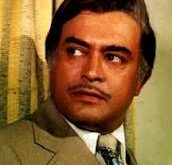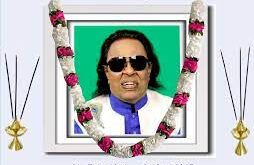14 वर्ष के वनवास में श्रीराम प्रमुख रूप से 17 जगह रुके, देखिए यात्रा का नक्शा
प्रभु श्रीराम को 14 वर्ष का वनवास हुआ। इस वनवास काल में श्रीराम ने कई ऋषि-मुनियों से शिक्षा और विद्या ग्रहण की, तपस्या की और भारत के आदिवासी, वनवासी और तमाम तरह के भारतीय समाज को संगठित कर उन्हें धर्म के मार्ग पर चलाया। संपूर्ण भारत को उन्होंने एक ही विचारधारा के सूत्र में बांधा, लेकिन इस दौरान उनके साथ कुछ ऐसा भी घटा जिसने उनके जीवन को बदल कर रख दिया।
रामायण में उल्लेखित और अनेक अनुसंधानकर्ताओं के अनुसार जब भगवान राम को वनवास हुआ तब उन्होंने अपनी यात्रा अयोध्या से प्रारंभ करते हुए रामेश्वरम और उसके बाद श्रीलंका में समाप्त की। इस दौरान उनके साथ जहां भी जो घटा उनमें से 200 से अधिक घटना स्थलों की पहचान की गई है।
जाने-माने इतिहासकार और पुरातत्वशास्त्री अनुसंधानकर्ता डॉ. राम अवतार ने श्रीराम और सीता के जीवन की घटनाओं से जुड़े ऐसे 200 से भी अधिक स्थानों का पता लगाया है, जहां आज भी तत्संबंधी स्मारक स्थल विद्यमान हैं, जहां श्रीराम और सीता रुके या रहे थे। वहां के स्मारकों, भित्तिचित्रों, गुफाओं आदि स्थानों के समय-काल की जांच-पड़ताल वैज्ञानिक तरीकों से की। आओ जानते हैं कुछ प्रमुख स्थानों के नाम..
1.तमसा नदी : अयोध्या से 20 किमी दूर है तमसा नदी। यहां पर उन्होंने नाव से नदी पार की।
2.श्रृंगवेरपुर तीर्थ : प्रयागराज से 20-22 किलोमीटर दूर वे श्रृंगवेरपुर पहुंचे, जो निषादराज गुह का राज्य था। यहीं पर गंगा के तट पर उन्होंने केवट से गंगा पार करने को कहा था। श्रृंगवेरपुर को वर्तमान में सिंगरौर कहा जाता है।
3.कुरई गांव : सिंगरौर में गंगा पार कर श्रीराम कुरई में रुके थे।
4.प्रयाग : कुरई से आगे चलकर श्रीराम अपने भाई लक्ष्मण और पत्नी सहित प्रयाग पहुंचे थे। प्रयाग को वर्तमान में इलाहाबाद कहा जाता है।
5.चित्रकूणट : प्रभु श्रीराम ने प्रयाग संगम के समीप यमुना नदी को पार किया और फिर पहुंच गए चित्रकूट। चित्रकूट वह स्थान है, जहां राम को मनाने के लिए भरत अपनी सेना के साथ पहुंचते हैं। तब जब दशरथ का देहांत हो जाता है। भारत यहां से राम की चरण पादुका ले जाकर उनकी चरण पादुका रखकर राज्य करते हैं।
6.सतना : चित्रकूट के पास ही सतना (मध्यप्रदेश) स्थित अत्रि ऋषि का आश्रम था। हालांकि अनुसूइया पति महर्षि अत्रि चित्रकूट के तपोवन में रहा करते थे, लेकिन सतना में ‘रामवन’ नामक स्थान पर भी श्रीराम रुके थे, जहां ऋषि अत्रि का एक ओर आश्रम था।
7.दंडकारण्य: चित्रकूट से निकलकर श्रीराम घने वन में पहुंच गए। असल में यहीं था उनका वनवास। इस वन को उस काल में दंडकारण्य कहा जाता था। मध्यप्रदेश, छत्तीसगढ़ और महाराष्ट्र के कुछ क्षेत्रों को मिलाकर दंडकाराण्य था। दंडकारण्य में छत्तीसगढ़, ओडिशा एवं आंध्रप्रदेश राज्यों के अधिकतर हिस्से शामिल हैं। दरअसल, उड़ीसा की महानदी के इस पास से गोदावरी तक दंडकारण्य का क्षेत्र फैला हुआ था। इसी दंडकारण्य का ही हिस्सा है आंध्रप्रदेश का एक शहर भद्राचलम। गोदावरी नदी के तट पर बसा यह शहर सीता-रामचंद्र मंदिर के लिए प्रसिद्ध है। यह मंदिर भद्रगिरि पर्वत पर है। कहा जाता है कि श्रीराम ने अपने वनवास के दौरान कुछ दिन इस भद्रगिरि पर्वत पर ही बिताए थे। स्थानीय मान्यता के मुताबिक दंडकारण्य के आकाश में ही रावण और जटायु का युद्ध हुआ था और जटायु के कुछ अंग दंडकारण्य में आ गिरे थे। ऐसा माना जाता है कि दुनियाभर में सिर्फ यहीं पर जटायु का एकमात्र मंदिर है।
8.पंचवटी नासिक : दण्डकारण्य में मुनियों के आश्रमों में रहने के बाद श्रीराम अगस्त्य मुनि के आश्रम गए। यह आश्रम नासिक के पंचवटी क्षेत्र में है जो गोदावरी नदी के किनारे बसा है। यहीं पर लक्ष्मण ने शूर्पणखा की नाक काटी थी। राम-लक्ष्मण ने खर व दूषण के साथ युद्ध किया था। गिद्धराज जटायु से श्रीराम की मैत्री भी यहीं हुई थी। वाल्मीकि रामायण, अरण्यकांड में पंचवटी का मनोहर वर्णन मिलता है।
9.सर्वतीर्थ : नासिक क्षेत्र में शूर्पणखा, मारीच और खर व दूषण के वध के बाद ही रावण ने सीता का हरण किया और जटायु का भी वध किया था जिसकी स्मृति नासिक से 56 किमी दूर ताकेड गांव में ‘सर्वतीर्थ’ नामक स्थान पर आज भी संरक्षित है। जटायु की मृत्यु सर्वतीर्थ नाम के स्थान पर हुई, जो नासिक जिले के इगतपुरी तहसील के ताकेड गांव में मौजूद है। इस स्थान को सर्वतीर्थ इसलिए कहा गया, क्योंकि यहीं पर मरणासन्न जटायु ने सीता माता के बारे में बताया। रामजी ने यहां जटायु का अंतिम संस्कार करके पिता और जटायु का श्राद्ध-तर्पण किया था। इसी तीर्थ पर लक्ष्मण रेखा थी।
10.पर्णशाला: पर्णशाला आंध्रप्रदेश में खम्माम जिले के भद्राचलम में स्थित है। रामालय से लगभग 1 घंटे की दूरी पर स्थित पर्णशाला को ‘पनशाला’ या ‘पनसाला’ भी कहते हैं। पर्णशाला गोदावरी नदी के तट पर स्थित है। मान्यता है कि यही वह स्थान है, जहां से सीताजी का हरण हुआ था। हालांकि कुछ मानते हैं कि इस स्थान पर रावण ने अपना विमान उतारा था। इस स्थल से ही रावण ने सीता को पुष्पक विमान में बिठाया था यानी सीताजी ने धरती यहां छोड़ी थी। इसी से वास्तविक हरण का स्थल यह माना जाता है। यहां पर राम-सीता का प्राचीन मंदिर है।
11.तुंगभद्रा : सर्वतीर्थ और पर्णशाला के बाद श्रीराम-लक्ष्मण सीता की खोज में तुंगभद्रा तथा कावेरी नदियों के क्षेत्र में पहुंच गए। तुंगभद्रा एवं कावेरी नदी क्षेत्रों के अनेक स्थलों पर वे सीता की खोज में गए।
12.शबरी का आश्रम : तुंगभद्रा और कावेरी नदी को पार करते हुए राम और लक्ष्मण चले सीता की खोज में। जटायु और कबंध से मिलने के पश्चात वे ऋष्यमूक पर्वत पहुंचे। रास्ते में वे पम्पा नदी के पास शबरी आश्रम भी गए, जो आजकल केरल में स्थित है। शबरी जाति से भीलनी थीं और उनका नाम था श्रमणा। ‘पम्पा’ तुंगभद्रा नदी का पुराना नाम है। इसी नदी के किनारे पर हम्पी बसा हुआ है। पौराणिक ग्रंथ ‘रामायण’ में हम्पी का उल्लेख वानर राज्य किष्किंधा की राजधानी के तौर पर किया गया है। केरल का प्रसिद्ध ‘सबरिमलय मंदिर’ तीर्थ इसी नदी के तट पर स्थित है।
13.ऋष्यमूक पर्वत : मलय पर्वत और चंदन वनों को पार करते हुए वे ऋष्यमूक पर्वत की ओर बढ़े। यहां उन्होंने हनुमान और सुग्रीव से भेंट की, सीता के आभूषणों को देखा और श्रीराम ने बाली का वध किया। ऋष्यमूक पर्वत वाल्मीकि रामायण में वर्णित वानरों की राजधानी किष्किंधा के निकट स्थित था। ऋष्यमूक पर्वत तथा किष्किंधा नगर कर्नाटक के हम्पी, जिला बेल्लारी में स्थित है। पास की पहाड़ी को ‘मतंग पर्वत’ माना जाता है। इसी पर्वत पर मतंग ऋषि का आश्रम था जो हनुमानजी के गुरु थे।
14.कोडीकरई : हनुमान और सुग्रीव से मिलने के बाद श्रीराम ने वानर सेना का गठन किया और लंका की ओर चल पड़े। तमिलनाडु की एक लंबी तटरेखा है, जो लगभग 1,000 किमी तक विस्तारित है। कोडीकरई समुद्र तट वेलांकनी के दक्षिण में स्थित है, जो पूर्व में बंगाल की खाड़ी और दक्षिण में पाल्क स्ट्रेट से घिरा हुआ है। यहां श्रीराम की सेना ने पड़ाव डाला और श्रीराम ने अपनी सेना को कोडीकरई में एकत्रित कर विचार विमर्ष किया। लेकिन राम की सेना ने उस स्थान के सर्वेक्षण के बाद जाना कि यहां से समुद्र को पार नहीं किया जा सकता और यह स्थान पुल बनाने के लिए उचित भी नहीं है, तब श्रीराम की सेना ने रामेश्वरम की ओर कूच किया।
15..रामेश्वरम : रामेश्वरम समुद्र तट एक शांत समुद्र तट है और यहां का छिछला पानी तैरने और सन बेदिंग के लिए आदर्श है। रामेश्वरम प्रसिद्ध हिन्दू तीर्थ केंद्र है। महाकाव्य रामायण के अनुसार भगवान श्रीराम ने लंका पर चढ़ाई करने के पहले यहां भगवान शिव की पूजा की थी। रामेश्वरम का शिवलिंग श्रीराम द्वारा स्थापित शिवलिंग है।
16.धनुषकोडी : वाल्मीकि के अनुसार तीन दिन की खोजबीन के बाद श्रीराम ने रामेश्वरम के आगे समुद्र में वह स्थान ढूंढ़ निकाला, जहां से आसानी से श्रीलंका पहुंचा जा सकता हो। उन्होंने नल और नील की मदद से उक्त स्थान से लंका तक का पुनर्निर्माण करने का फैसला लिया। धनुषकोडी भारत के तमिलनाडु राज्य के पूर्वी तट पर रामेश्वरम द्वीप के दक्षिणी किनारे पर स्थित एक गांव है। धनुषकोडी पंबन के दक्षिण-पूर्व में स्थित है। धनुषकोडी श्रीलंका में तलैमन्नार से करीब 18 मील पश्चिम में है।
इसका नाम धनुषकोडी इसलिए है कि यहां से श्रीलंका तक वानर सेना के माध्यम से नल और नील ने जो पुल (रामसेतु) बनाया था उसका आकार मार्ग धनुष के समान ही है। इन पूरे इलाकों को मन्नार समुद्री क्षेत्र के अंतर्गत माना जाता है। धनुषकोडी ही भारत और श्रीलंका के बीच एकमात्र स्थलीय सीमा है, जहां समुद्र नदी की गहराई जितना है जिसमें कहीं-कहीं भूमि नजर आती है।
17.’नुवारा एलिया’ पर्वत श्रृंखला : वाल्मीकिय-रामायण अनुसार श्रीलंका के मध्य में रावण का महल था। ‘नुवारा एलिया’ पहाड़ियों से लगभग 90 किलोमीटर दूर बांद्रवेला की तरफ मध्य लंका की ऊंची पहाड़ियों के बीचोबीच सुरंगों तथा गुफाओं के भंवरजाल मिलते हैं। यहां ऐसे कई पुरातात्विक अवशेष मिलते हैं जिनकी कार्बन डेटिंग से इनका काल निकाला गया है।
श्रीलंका में नुआरा एलिया पहाड़ियों के आसपास स्थित रावण फॉल, रावण गुफाएं, अशोक वाटिका, खंडहर हो चुके विभीषण के महल आदि की पुरातात्विक जांच से इनके रामायण काल के होने की पुष्टि होती है। आजकल भी इन स्थानों की भौगोलिक विशेषताएं, जीव, वनस्पति तथा स्मारक आदि बिलकुल वैसे ही हैं जैसे कि रामायण में वर्णित किए गए हैं।
श्रीवाल्मीकि ने रामायण की संरचना श्रीराम के राज्याभिषेक के बाद वर्ष 5075 ईपू के आसपास की होगी (1/4/1 -2)। श्रुति स्मृति की प्रथा के माध्यम से पीढ़ी-दर-पीढ़ी परिचलित रहने के बाद वर्ष 1000 ईपू के आसपास इसको लिखित रूप दिया गया होगा। इस निष्कर्ष के बहुत से प्रमाण मिलते हैं। रामायण की कहानी के संदर्भ निम्नलिखित रूप में उपलब्ध हैं-
* कौटिल्य का अर्थशास्त्र (चौथी शताब्दी ईपू)
* बौद्ध साहित्य में दशरथ जातक (तीसरी शताब्दी ईपू)
* कौशाम्बी में खुदाई में मिलीं टेराकोटा (पक्की मिट्टी) की मूर्तियां (दूसरी शताब्दी ईपू)
* नागार्जुनकोंडा (आंध्रप्रदेश) में खुदाई में मिले स्टोन पैनल (तीसरी शताब्दी)
* नचार खेड़ा (हरियाणा) में मिले टेराकोटा पैनल (चौथी शताब्दी)
* श्रीलंका के प्रसिद्ध कवि कुमार दास की काव्य रचना ‘जानकी हरण’ (सातवीं शताब्दी)
संदर्भ ग्रंथ :
1. वाल्मीकि रामायण
2. वैद युग एवं रामायण काल की ऐतिहासिकता (सरोज बाला, अशोक भटनागर, कुलभूषण मिश्र)
जय श्री राम
English Translation
In the 14-year exile Shriram stayed at 17 places prominently, see the map of the journey
Prabhu Shriram was 14 years in exile. During this exile period, Shri Ram received education and education from many sages and ascetics, performed penance and organized the tribal, forest dwellers and all types of Indian society and led them on the path of religion. He tied the whole of India in the thread of one ideology, but in the meantime something happened to him which changed his life.
According to many researchers mentioned in the Ramayana and when Lord Rama was exiled, he started his journey from Ayodhya to Rameswaram and then to Sri Lanka. During this period, more than 200 incidents have been identified with them wherever they occur.
Eminent historian and archaeological researcher Dr. Ram Avtar has unearthed more than 200 places connected with the events of the life of Shri Ram and Sita, where the memorial sites still exist where Shri Ram and Sita stayed or stayed. The time period of the monuments, frescoes, caves etc. were investigated through scientific methods. Let’s know the names of some major places ..
1. Tamsa River: Tamsa River is 20 km from Ayodhya. Here he crossed the river by boat.
2. Shringverpur Tirtha: 20-22 km from Prayagraj, they reached Shringverpur, which was the kingdom of Nishadraj Guh. It was here that he asked the boatman to cross the Ganges on the banks of the Ganges. Shringverpur is presently called Singraur.
3. Kurai Village: Sriram stayed at Kurai after crossing the Ganges at Singaur.
4. Prayag: Shriram reached Prayag with his brother Lakshman and wife after moving from Kurai. Prayag is currently called Allahabad.
5. Chitrakunut: Prabhu Shriram crossed the Yamuna river near Prayag Sangam and then reached Chitrakoot. Chitrakoot is the place where Bharat arrives with his army to persuade Rama. Then when Dasharatha dies. India takes the step foot of Rama from here and rules by keeping his foot paduka.
6. Satna: Near Chitrakoot was the ashram of Atri Rishi located in Satna (Madhya Pradesh). Although Anusiya’s husband Maharishi Atri lived in Tapovan in Chitrakoot, Sri Ram stayed at a place called ‘Ramavan’ in Satna, where Rishi Atri had an ashram on one side.
7. Bandandakaranya: After leaving Chitrakoot, Shri Ram reached the dense forest. Actually, he was in exile here. This forest was called Dandakaranya at that time. Dandakaranya was inclusive of some areas of Madhya Pradesh, Chhattisgarh and Maharashtra. Dandakaranya covers most of the states of Chhattisgarh, Odisha and Andhra Pradesh. In fact, the area of Dandakaranya was spread from this pass of the Mahanadi of Orissa to Godavari. Bhadrachalam, a city in Andhra Pradesh is part of the same Dandakaranya. Situated on the banks of river Godavari, the city is famous for the Sita-Ramachandra temple. This temple is on the Bhadragiri mountain. It is said that Sri Ram spent a few days on this Bhadragiri mountain during his exile. According to local belief, there was a battle between Ravana and Jatayu in the sky of Dandakaranya and some parts of Jatayu fell in Dandakaranya. It is believed that this is the only temple of Jatayu in the world.
8. Panchavati Nashik: After staying in the ashrams of the sages in Dandakaranya, Shriram went to the ashram of Agastya Muni. This ashram is in the Panchvati area of Nashik, situated on the banks of the Godavari River. It was here that Laxman cut off Shurpanakha’s nose. Rama-Lakshmana fought with Khar and Dushan. Ram’s friendship with Giddharaj Jatayu also took place here. A delightful description of Panchavati is found in Valmiki Ramayana, Aranyakand.
9. Sarvatirtha: Ravana killed Sita and killed Jatayu only after the slaughter of Shurpanakha, Maricha and Khar and Koshna in the Nashik region, whose memory is still in a place called ‘Sarvatirtha’ in the village of Takade, 56 km from Nashik. Is protected. Jatayu died in a place named Sarvatirtha, which is present in the village of Takade in Igatpuri tehsil of Nashik district. This place was called Sarvartirtha because it is here that the dying Jatayu told about Sita Mata. Ramji performed the last rites of Jatayu here and paid homage to the father and Jatayu. Lakshman Rekha was on this pilgrimage.
10.Parnashala: The tavernala is located at Bhadrachalam in Khammam district in Andhra Pradesh. The palace located about 1 hour away from Ramalaya is also known as ‘Panshala’ or ‘Pansala’. The palace is located on the banks of the Godavari River. It is believed that this is the place from where Sitaji was killed. However some believe that Ravana landed his plane at this place. It was from this place that Ravana placed Sita in the Pushpak Vimana, that is, Sitaji left the earth here. This is believed to be the site of the actual derailment. There is an ancient temple of Rama-Sita here.
11.Tungabhadra: After Sarvatirtha and Paarnashala, Shriram-Lakshmana reached the area of Tungabhadra and Cauvery rivers in search of Sita. He went in search of Sita at many sites in the Tungabhadra and Kaveri river areas.
12. Ashram of Shabari: Rama and Lakshman cross the river Tungabhadra and Kaveri in search of Sita. After meeting Jatayu and Kabandha, they reached Mount Rishimuk. On the way, he also visited the Shabri Ashram near the Pampa River, which is presently located in Kerala. Shabari was a Bhilani from the caste and her name was Shramana. ‘Pampa’ is the old name of the Tungabhadra river. Hampi is situated on the banks of this river. In the mythological text ‘Ramayana’, Hampi is mentioned as the capital of the monkey kingdom Kishkindha. The famous ‘Sabarimalaya temple’ shrine of Kerala is situated on the banks of this river.
13. Rishyamuk Parvat: Crossing the Malay Parvat and Sandalwood forests, they advanced towards Rishimuk Parvat. Here he met Hanuman and Sugriva, saw Sita’s jewelery and Shriram slaughtered Bali. Rishyamuk Parvat was located near Kishkindha, the capital of the apes mentioned in the Valmiki Ramayana. Rishyamuk Parvat and Kishkindha Nagar are located in Hampi, District Bellary, Karnataka. The nearby hill is considered as ‘Matang Parvat’. On this mountain was the ashram of Matang Rishi, who was the guru of Hanumanji.
14. Kodikarai: After meeting Hanuman and Sugriva, Shri Ram formed the Vanar Sena and marched towards Lanka. Tamil Nadu has a long coastline, extending for about 1,000 km. Kodikarai beach is situated to the south of Velankani, bounded by Bay of Bengal in the east and Palk Strait in the south. Here Shriram’s army halted and Shriram gathered his army in Kodikarai and deliberated. But after Rama’s army surveyed the place that the sea could not be crossed from here and this place was not even suitable for building a bridge, then Rama’s army marched towards Rameswaram.
15..Rameswaram: Rameshwaram beach is a serene beach and the shallow water here is ideal for swimming and sun bathing. Rameshwaram is a famous Hindu pilgrimage center. According to the epic Ramayana, Lord Shri Ram worshiped Lord Shiva here before climbing Lanka. The Shiva lingam of Rameswaram is the lingam established by Shriram.
16. Rajdhanakodi: According to Valmiki, after three days of research, Sri Ram found a place in the sea from Rameswaram, from which Sri Lanka can be easily reached. He decided to rebuild from the said place to Lanka with the help of Nal and Neil. Dhanushkodi is a village on the southern bank of Rameswaram Island on the eastern coast of the state of Tamil Nadu, India. Dhanushkodi is situated to the south-east of Pamban. Dhanushkodi is about 18 miles west of Talaimannar in Sri Lanka.
Its name is Dhanushkodi because the bridge (Ramsetu) built by Nal and Neel through Vanar Sena from here to Sri Lanka has the same shape as Marg Dhanush. These entire areas are considered under the Mannar Marine Zone. Dhanushkodi is the only terrestrial border between India and Sri Lanka, where the sea is as deep as the river, where the land is seen at some places.
17. ‘Anuvara Eliya’ mountain range: According to Valmiki-Ramayana, there was the palace of Ravana in the middle of Sri Lanka. About 90 km from the ‘Nuwara Eliya’ hills, there is a cascade of tunnels and caves in the middle of the high hills of central Lanka, towards Bandravela. Many such archaeological remains are found here, which have been dated from their carbon dating.
Archaeological investigations of Ravana Fall, Ravana Caves, Ashoka Vatika, the ruins of Vibhishan’s palace, etc., located around the Nuura Eliya Hills in Sri Lanka, confirm their existence in the Ramayana period. Even today, the geographical features, fauna, flora and monuments of these places are exactly the same as described in the Ramayana.
Srivamiliki may have constructed the Ramayana around the year 5075 BCE after the coronation of Sri Ram (1/4/1 -2). It must have been written in the year around 1000 BCE after being passed on from generation to generation through the practice of Shruti Smriti. There is a lot of evidence for this conclusion. References to the story of Ramayana are available in the following form-
* Arthashastra of Kautilya (4th century BCE)
* Dasharatha Jataka in Buddhist literature (3rd century BCE)
* Terracotta (paved clay) sculptures found in Kaushambi excavated (2nd century BCE)
* Stone panels found in excavations at Nagarjunakonda (Andhra Pradesh) (3rd century).
* Terracotta panel found in Nachar Kheda (Haryana) (4th century)
* Janki Haran (7th century), a poetic composition by the famous Sri Lankan poet Kumar Das.
Reference Text:
1. Valmiki Ramayana
2. Historicity of Vaid era and Ramayana period (Saroj Bala, Ashok Bhatnagar, Kulbhushan Mishra).
Long live Rama
 पौराणिक कथाओं, प्रेरक क्षण, मंदिरों, धर्मों, फिल्मों, हस्तियों के बारे में दिलचस्प जानकारी, हजारों गाने, भजन, आरती के बोल हैं Your wish may come true today…
पौराणिक कथाओं, प्रेरक क्षण, मंदिरों, धर्मों, फिल्मों, हस्तियों के बारे में दिलचस्प जानकारी, हजारों गाने, भजन, आरती के बोल हैं Your wish may come true today…



